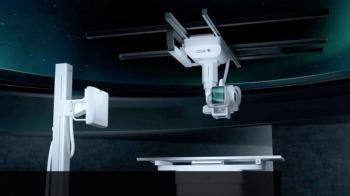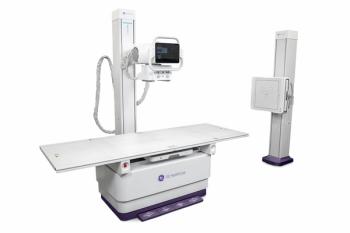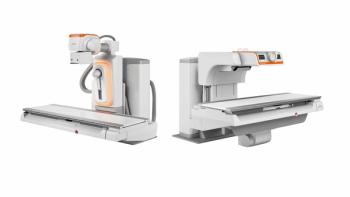
Agfa points to third way with next-generation CR
Moving from film-based radiography to digital x-ray imaging typically involves a choice between two quite different technologies, computed versus digital radiography. Now Agfa is offering an alternative halfway between the two.
Moving from film-based radiography to digital x-ray imaging typically involves a choice between two quite different technologies, computed versus digital radiography. Now Agfa is offering an alternative halfway between the two.
The company's new DX-S, released in mid-October at JFR 2005, the annual meeting of the French Radiology Society, is a high-tech, high-spec, cassette-based bridge between CR and DR. Compared with CR, cassettes can be digitized faster, units are smaller and are mobile, and options exist for enhancing image quality or reducing patient dose.
"You still utilize cassettes, but you have quality comparable to DR, as well as speed and compactness," said Iskander Accaoui, global business manager for Agfa's HealthCare business group.
DX-S incorporates two technologies related to detector performance and image processing. Some competitor systems on the market are already using one or the other, but no other CR solution has both, according to Accaoui.
DirectriX needle-based phosphor technology means that the DX-S detector plates are allied more closely to flat-panel DR detectors. This potentially allows a twofold improvement in image quality, compared with traditional CR, or a reduction in radiation exposure. Scanhead line-to-line CR simulation and light collection technology replaces pixel-by-pixel reading. This has cut the time required for image processing and the size of the equipment required.
"We have a machine that is so small you can roll it into the x-ray room," Accaoui said. "Before, you had to walk back and forth and leave your patient while the image was being processed by the digitizer."
Agfa chose JFR 2005 for its introduction because France has traditionally been one of the biggest markets for CR, together with the U.S. and Japan, Accaoui said. This next-generation system, which is now being marketed globally, will be showcased at the 2005 RSNA meeting.
Sales potential for digital x-ray solutions remains strong. The worldwide market for CR is expected to grow by 20% to 30% over the next year, Accaoui said. This is not surprising given that general radiography accounts for 50% to 60% of exams performed in an average radiology department. Many institutions have yet to go filmless, while early adopters may be looking to upgrade.
Market forecasts from five years ago that predicted DR would mean the end of CR have proven wrong, Accaoui said. DR sales are also growing, but the two technologies need not be rivals. He envisions standard exams, such as chest x-rays, being performed rapidly and accurately by DR, while emergency radiography could be handled by a mobile DX-S unit. Pediatric radiography and exams of difficult-to-image patients, such as obese subjects or wheelchair occupants, could also be performed with the cassette-based DX-S.
"The market has taught all of industry a lesson," he said. "Everyone agrees that there will always be a part in general radiology that will need cassettes. That's a given. Otherwise, CR would have faded away over the past few years, but it is simply not happening. CR is growing."
Agfa will be pitching DX-S to customers who are already familiar with CR and those considering upgrading their CR or moving to DR, Accaoui said. Some sales may be made to sites that have yet to abandon film, though experience suggests that most hospitals prefer a stepwise approach to digitization. Adoption of a traditional, centralized CR solution in the first instance may still make sense.
"If you have to move everything to DR, it will be very expensive. And remaining with existing CR solutions is not optimal," Accaoui said. "These are two extremes in terms of digital solutions. Now there is something in the middle."
Newsletter
Stay at the forefront of radiology with the Diagnostic Imaging newsletter, delivering the latest news, clinical insights, and imaging advancements for today’s radiologists.




























